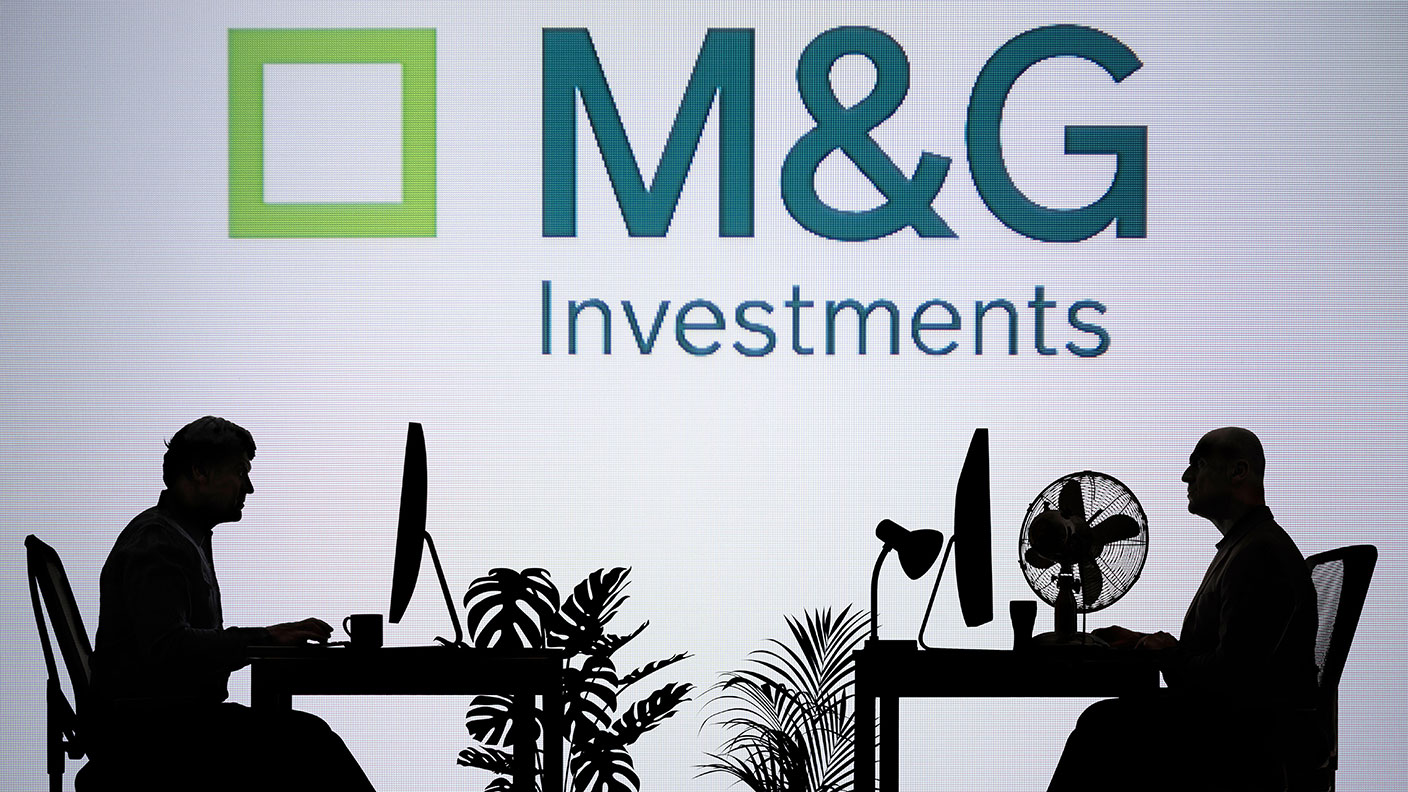M&G offers a solid 10.1% yield – but future growth is uncertain
Financial services group M&G has one of the highest dividend yields in the FTSE 100. But it’s a complicated company, and a tough one to analyse, says Rupert Hargreaves. Here, he looks at the numbers to find out if it’s one to put in your portfolio.


Financial services group M&G (LSE: MNG) currently has one of the highest dividend yields in the FTSE 100. With a yield of 10.1%, the stock offers the fourth highest distribution in the blue-chip index.
A high dividend yield is not always what it seems; it can be a sign that the market does not trust the business to deliver on the payout. In this case, it’s easy to see why the market might not be willing to pay over the odds for M&G – the company is quite complex, which makes it difficult to analyse.
Indeed, some analysts have consistently argued that the business has been misunderstood by the market since it was spun off from Prudential (LSE: PRU) in 2019.
MoneyWeek
Subscribe to MoneyWeek today and get your first six magazine issues absolutely FREE

Sign up to Money Morning
Don't miss the latest investment and personal finances news, market analysis, plus money-saving tips with our free twice-daily newsletter
Don't miss the latest investment and personal finances news, market analysis, plus money-saving tips with our free twice-daily newsletter
A complex business model
M&G is really two businesses. There’s the wealth management side, then there’s the legacy annuities and with-profits funds division, which is now closed.
On the face of it, neither business is particularly appealing. The wealth management and funds sector has been under pressure for years due to the rise of low-cost passive funds and robo-advisors.
Meanwhile, the legacy annuities business does not offer any prospect of growth. What’s more, any organisations dealing with annuities are subject to strict regulatory requirements and capital tests. While these policies can produce lots of cash for management companies, regulatory burdens, and in this case the closed nature of the business, make it difficult to project how the dividend will grow in the years ahead.
Still, the stability of cash flows from this legacy business does give M&G some flexibility. It can estimate how much cash it will generate over the next couple of years and then allocate this accordingly between shareholder returns and business investment.
Management set out to generate £2.2bn of capital from its operations by the end of 2022 after the demerger and it hit this target a year earlier than planned. It now wants to deliver £2.5bn more in operating capital by 2024, the majority of which will come from the legacy business and help fund shareholder returns.
The legacy business generated around two thirds of overall operating profit before tax for the financial year ending December 2021.
M&G is investing for growth in a highly competitive market
To try and drive growth, the group is investing heavily in building out its wealth and asset management business.
Last year M&G acquired the model portfolio service provider TCF investment; a majority stake in impact investor responsAbility; and a minority stake in robo-advisor Moneyfarm. All of these were done with the goal of boosting M&G’s presence in wealth management, with a focus on ESG (environmental, social and governance-oriented) investing.
However, figures from the asset management arm show just how tough it will be for M&G to grow this side of the business. Last year, retail assets under management and administration fell by 9%. While outflows were less than half of those reported in 2020 (even more surprising considering the strong market performance that year), M&G only managed to stem outflows by slashing the cost of its funds.
While the company does have an established name and record in wealth management, this industry is incredibly competitive – there are some really big names with much deeper pockets than M&G chasing clients.
And retail investment flows are only part of the picture (I told you this company was complex). Assets under management and administration totalled £156.7bn at the end of 2021, with roughly a third in the retail business. The institutional businesses accounted for the bulk of the remainder.
Thanks to positive market conditions last year, and £5.8bn of client inflows, overall institutional assets expanded by 20% last year. Still, I should point out that outflows amounted to £6.8bn in the previous year.
A company with a mixed outlook is difficult to analyse
Adding up all of the above factors, it becomes very difficult to project how M&G will perform over the long-term and what this will mean for its dividend.
Management is confident of being able to generate enough capital to support the payout until 2025, suggesting it’s safe for the next couple of years. What happens beyond that is harder to understand, and I think that’s what the market will continue to focus on.
As such, while the stock might look cheap today, trading at a forward price/earnings (p/e) multiple of 8.8, this seems unlikely to change until there is more clarity about its future growth potential.
Based on these factors, I don’t think M&G is the sort of company I would want to own in my portfolio.
Get the latest financial news, insights and expert analysis from our award-winning MoneyWeek team, to help you understand what really matters when it comes to your finances.

Rupert is the former deputy digital editor of MoneyWeek. He's an active investor and has always been fascinated by the world of business and investing. His style has been heavily influenced by US investors Warren Buffett and Philip Carret. He is always looking for high-quality growth opportunities trading at a reasonable price, preferring cash generative businesses with strong balance sheets over blue-sky growth stocks.
Rupert has written for many UK and international publications including the Motley Fool, Gurufocus and ValueWalk, aimed at a range of readers; from the first timers to experienced high-net-worth individuals. Rupert has also founded and managed several businesses, including the New York-based hedge fund newsletter, Hidden Value Stocks. He has written over 20 ebooks and appeared as an expert commentator on the BBC World Service.
-
 PayPoint: A promising stock for income-seekers
PayPoint: A promising stock for income-seekersPayPoint, a household name across Britain, is moving away from its traditional roots toward a digital future. Investors after a steady income should buy in
-
 Invest in forestry: a tax-efficient way to grow your wealth
Invest in forestry: a tax-efficient way to grow your wealthRecord sums are pouring into forestry funds. It makes sense to join the rush, says David Prosser
-
 Halifax: House price slump continues as prices slide for the sixth consecutive month
Halifax: House price slump continues as prices slide for the sixth consecutive monthUK house prices fell again in September as buyers returned, but the slowdown was not as fast as anticipated, latest Halifax data shows. Where are house prices falling the most?
-
 Rents hit a record high - but is the opportunity for buy-to-let investors still strong?
Rents hit a record high - but is the opportunity for buy-to-let investors still strong?UK rent prices have hit a record high with the average hitting over £1,200 a month says Rightmove. Are there still opportunities in buy-to-let?
-
 Pension savers turn to gold investments
Pension savers turn to gold investmentsInvestors are racing to buy gold to protect their pensions from a stock market correction and high inflation, experts say
-
 Where to find the best returns from student accommodation
Where to find the best returns from student accommodationStudent accommodation can be a lucrative investment if you know where to look.
-
 The world’s best bargain stocks
The world’s best bargain stocksSearching for bargain stocks with Alec Cutler of the Orbis Global Balanced Fund, who tells Andrew Van Sickle which sectors are being overlooked.
-
 Revealed: the cheapest cities to own a home in Britain
Revealed: the cheapest cities to own a home in BritainNew research reveals the cheapest cities to own a home, taking account of mortgage payments, utility bills and council tax
-
 UK recession: How to protect your portfolio
UK recession: How to protect your portfolioAs the UK recession is confirmed, we look at ways to protect your wealth.
-
 Buy-to-let returns fall 59% amid higher mortgage rates
Buy-to-let returns fall 59% amid higher mortgage ratesBuy-to-let returns are slumping as the cost of borrowing spirals.